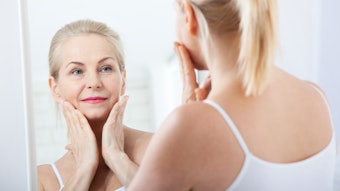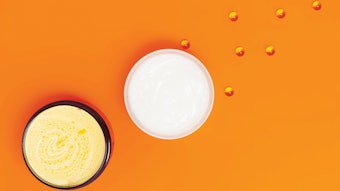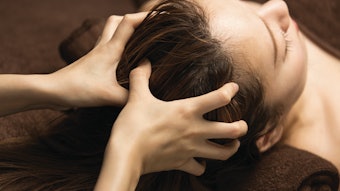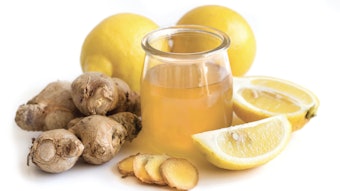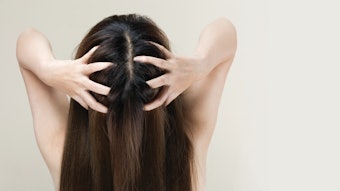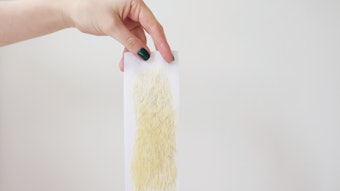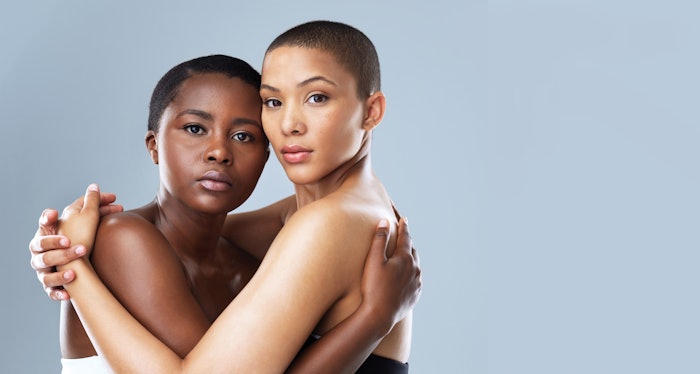
Post-inflammatory hyperpigmentation (PIH) and post-inflammatory erythema (PIE) are two of the most common types of discoloration seen in professional skin care—but they’re often used interchangeably or mistakenly lumped together under the blanket term “scarring.” This oversimplification can lead to ineffective or even harmful treatment choices, particularly in clients with melanated skin.
This article is only available to registered users.
Log In to View the Full Article
Post-inflammatory hyperpigmentation (PIH) and post-inflammatory erythema (PIE) are two of the most common types of discoloration seen in professional skin care—but they’re often used interchangeably or mistakenly lumped together under the blanket term “scarring.” This oversimplification can lead to ineffective or even harmful treatment choices, particularly in clients with melanated skin.
While both can result from acne or other types of skin trauma, melanated skin is uniquely prone to PIH and significantly more vulnerable to long-term damage when improperly treated. When skin care professionals fail to distinguish between pigment and erythema—or overlook the nuances of treating melanated skin—they risk doing more harm than good.
By the end of this article, you’ll be able to confidently differentiate between PIE and PIH, understand how inflammation drives pigment formation in diverse skin tones and implement safer, more effective treatment plans. You’ll also gain strategies for properly prepping the skin before exfoliation, selecting the right brightening ingredients and supporting post-treatment recovery to reduce the risk of rebound pigmentation. The goal? Smarter, more inclusive care for every client’s skin story.
PIH vs. PIE: What’s the Difference, and Why Does It Matter?
Let’s start with the basics: PIH presents as brown, tan or black spots after inflammation or injury to the skin, especially following acne, eczema, ingrown hairs or trauma. It’s the result of excess melanin production triggered by inflammation. PIH can affect any skin tone but is far more prevalent and long-lasting in Fitzpatrick types IV-VI due to higher baseline melanin activity and a more reactive melanocyte response.
PIE, on the other hand, shows up as red or pink discoloration left behind after inflammation. It’s more common in lighter skin tones where vascular reactivity is more visible and may linger even after the initial breakout or trauma resolves. While both can coexist, PIE is not a pigmentation issue in the traditional sense—it’s a vascular response.
Why does this distinction matter? Treating PIE with aggressive tyrosinase inhibitors or exfoliants misses the mark and may compromise the skin barrier. Treating PIH with vascular therapies (like lasers intended for telangiectasia) may offer no improvement at all—or worse, increase inflammation.
Correctly identifying whether you’re working with pigment or erythema sets the tone for the entire treatment plan.
What Causes PIH in Melanated Skin?
Melanated skin is more prone to PIH because melanocytes are larger, more dendritic and inherently more reactive to even mild inflammation.
Science-heavy jargon aside, melanocytes in darker skin are not only larger but also more dendritic—meaning they have more arm-like extensions (dendrites) that reach into surrounding skin cells to transfer melanin. More dendrites = more melanin delivery = a higher risk of visible pigmentation when the skin is inflamed.
That means everyday stressors like:
• Picking at blemishes
• Overuse of exfoliating products
• Inflammation from acne or ingrown hairs
…can all lead to a cascade of pigment production that takes months (or longer) to fade.
It’s also worth noting that melanogenesis can be triggered not just by inflammation, but by heat, friction, UV exposure and barrier disruption—so the esthetician’s approach must be equal parts corrective and protective.
Preventing PIH Starts Early: Reduce Inflammation First
One of the most effective ways to prevent PIH—particularly in melanated skin—is to address inflammation early and decisively. The longer inflammation lingers, the greater the stimulation of melanocytes, and the higher the chance of developing lingering discoloration. Facing both active inflammation and existing pigmentation? That inflammation becomes your primary concern to target.
Proactive inflammation management should be central to any pigmentation strategy, in any skin tone. This includes:
• Using anti-inflammatory ingredients at the first signs of breakout or trauma (like green tea and centella asiatica).
• Avoiding overly aggressive or drying treatments, which can prolong the inflammatory cycle.
• Discouraging picking, which compounds trauma by encouraging more inflammation.
• Supporting the skin barrier so the skin can heal itself more effectively (look to ingredients like beta-glucan and ceramides.)
When inflammation is reduced early, melanocyte activity is less likely to be triggered—resulting in fewer, less severe and shorter-lived pigmentation “spots”. It’s the definition of working smarter, not harder.
Best Practices: Prep Before You Correct
Too often, we tend to jump right into corrective treatments, but when it comes to treating those prone to PIH, preparation is the foundation for results. Before providing exfoliating or brightening professional treatments, the skin should be:
• Calm: No active inflammation or flares.
• Hydrated: Barrier function must be intact to reduce risk of post-treatment PIH.
• Primed: Introduce a gentle tyrosinase inhibitor to begin suppressing melanin activity before professional exfoliation.
• Protected: Clients should be consistently using a broad-spectrum SPF 30 or higher for at least 2 weeks pre-treatment.
A few pre-treatment staples to consider:
• Mandelic acid: Offers gentle exfoliation with anti-inflammatory and brightening properties—ideal for all skin types and tones
• Niacinamide and licorice root: Anti-inflammatory, pigment-inhibiting and barrier-supportive
• Azelaic acid, tranexamic acid and arbutin: Help gently suppress melanogenesis while supporting overall skin tone balance
If you’re not seeing consistent barrier support and sun protection at home, pause the in-clinic peels and prioritize prep.
Exfoliating & Brightening: What’s Safe and Effective?
Professional exfoliation can be a powerful tool for treating PIH—but caution is key. The goal is to encourage cell turnover and suppress melanin activity without overstimulating or inflaming the skin.
Safe Choices—Exfoliation:
• Lactic acid: A hydrating AHA that brightens gently and supports barrier health.
• Mandelic acid: As mentioned above, this gentle AHA is a go-to for inflammation-prone, pigmented skin.
• Acetyl glucosamine: Gently encourages desquamation and fades dark spots by interrupting melanin production.
• Enzyme treatments: Especially papain and bromelain, offer non-acid exfoliation that’s safe for even sensitized skin.
Brightening Ingredients:
• Tranexamic acid: Interrupts the inflammatory cascade that leads to excess melanin production, making it ideal for preventing and treating PIH in sensitive or acne-prone skin.
• Licorice root extract: A gentle botanical that helps inhibit tyrosinase activity, reduce redness and calm sensitized skin—making it an excellent option for skin prone to both PIH and PIE.
• Alpha-arbutin: A gentle yet effective skin-brightening agent that works by inhibiting tyrosinase, the enzyme responsible for melanin production. It helps fade existing discoloration—especially UV-induced spots—and prevents new pigment from forming. Alpha-arbutin is well-tolerated across all skin types and tones, making it a smart choice for gradually evening skin tone without irritation.
• Tetrahexyldecyl ascorbate (THD Vitamin C): A stable, oil-soluble form of vitamin C that penetrates deeply to brighten skin tone and fight oxidative stress without the irritation of traditional ascorbic acid.
It’s essential to monitor your client’s response between sessions. Less is more—especially in Fitz IV–VI. Over-exfoliation or layering too many actives at once can do more harm than good.
Post-Treatment Care: Where Progress Is Encouraged and Sustained
Remember, even more important than professional treatments is consistent home care. The work doesn’t stop after the peel or mask is removed. In fact, what happens in the days that follow a treatment can determine whether your client sees improvement—or regression.
Always prioritize:
• SPF: Non-negotiable. In addition to frequent reapplication, clients should also practice safe sun habits when outdoors.
• Hydration: Skin that's well-hydrated heals faster and more evenly.
• Barrier support: Ingredients like ceramides, beta-glucan and panthenol reduce inflammation and reinforce recovery.
Client Communication & Setting Expectations
It’s crucial to set realistic expectations when treating PIH. Pigment doesn't fade overnight—and clients may have tried (and been burned by) multiple solutions before they reach you.
Be transparent:
• Timeline: It may take 8–12+ weeks to see visible improvement.
• Consistency: Home care matters as much—if not more—than in-clinic treatments.
• Lifestyle: Picking, sun exposure and systemic factors all impact pigment.
When you frame hyperpigmentation treatment as a journey, not a one-and-done fix, you create trust—and better long-term outcomes.
What About PIE?
While we are focusing primarily on PIH, post-inflammatory erythema (PIE) deserves its own moment—especially since it’s often confused with pigmentation and treated incorrectly.
PIE presents as pink, red or purple discoloration, more commonly seen in lighter skin tones (Fitz I–III), where vascular visibility is greater. Unlike PIH, which is caused by excess melanin, PIE is the result of damaged or dilated capillaries following inflammation. Think of it as leftover inflammation trapped in the skin’s vascular network.
Because PIE is vascular—not pigment-based—tyrosinase inhibitors and exfoliants won’t resolve it and may even exacerbate it by further irritating the skin. PIE tends to fade over time but can be gently supported through:
• Barrier-repairing ingredients (like beta-glucan and ceramides)
• Calming agents (like azelaic acid or centella asiatica)
• LED therapy (especially red light to calm inflammation and support microcirculation)
In severe or prolonged cases, clients may benefit from vascular-specific laser treatments—but this must be approached with caution and by a qualified medical professional, especially in deeper skin tones where laser risks are higher.
Understanding that PIE and PIH require fundamentally different approaches is critical. Misidentifying one for the other is more than a technical error—it can delay healing and damage client trust.
Final Thoughts
Treating hyperpigmentation in diverse skin tones isn't one-size-fits-all. It calls for an informed, intentional and culturally competent approach—one rooted in science, safety and an understanding of melanin’s complexity.
When skin care professionals learn to differentiate PIH from PIE, prioritize prep over peels and treat the skin with care—not force—they become powerful agents for change, confidence and transformation in their clients' lives.
Brightening smart isn’t just a technique—it’s a mindset. One that honors the skin’s natural brilliance while helping it shine even brighter.
